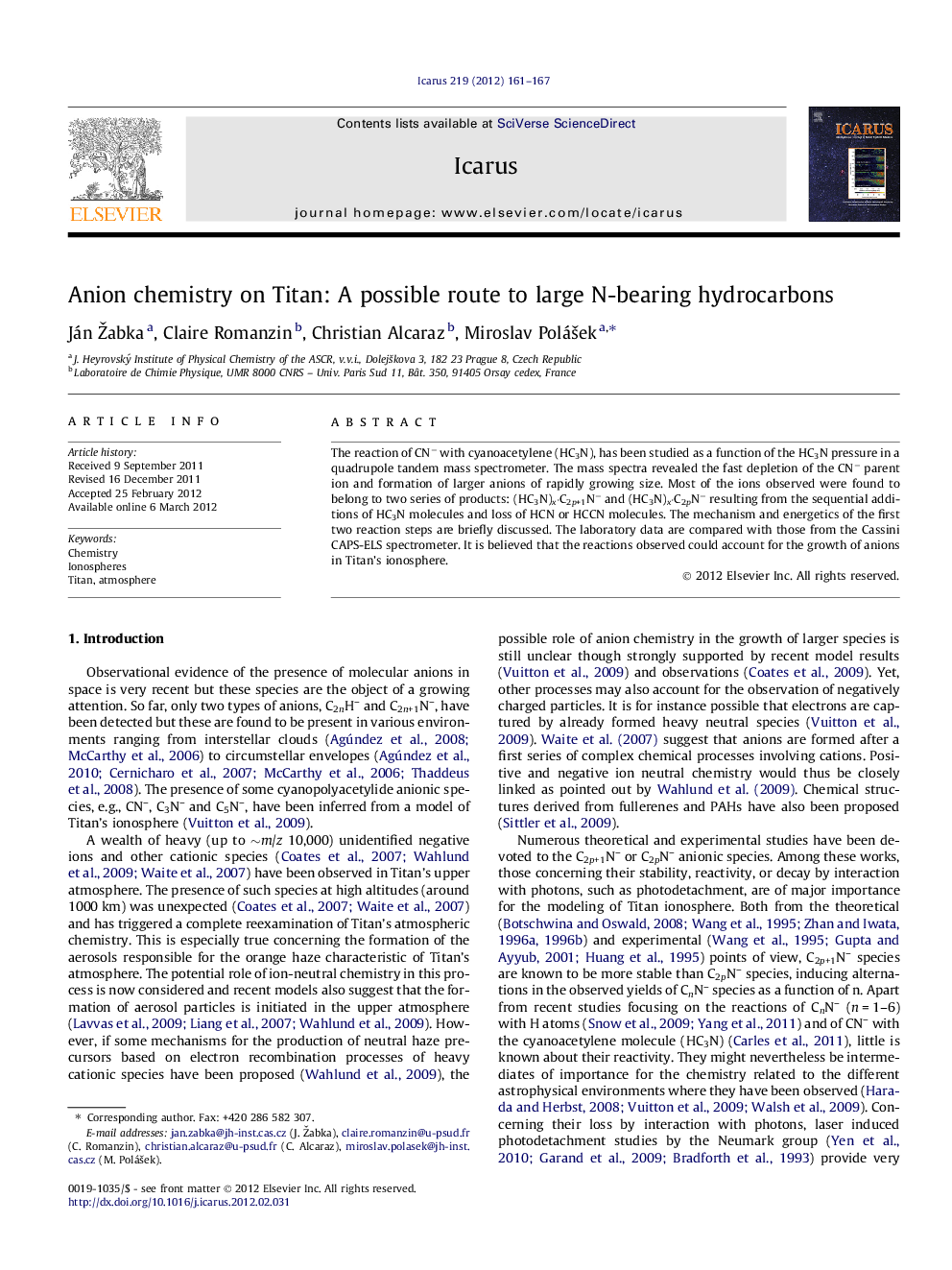| Article ID | Journal | Published Year | Pages | File Type |
|---|---|---|---|---|
| 1773485 | Icarus | 2012 | 7 Pages |
The reaction of CN− with cyanoacetylene (HC3N), has been studied as a function of the HC3N pressure in a quadrupole tandem mass spectrometer. The mass spectra revealed the fast depletion of the CN− parent ion and formation of larger anions of rapidly growing size. Most of the ions observed were found to belong to two series of products: (HC3N)x·C2p+1N− and (HC3N)x·C2pN− resulting from the sequential additions of HC3N molecules and loss of HCN or HCCN molecules. The mechanism and energetics of the first two reaction steps are briefly discussed. The laboratory data are compared with those from the Cassini CAPS-ELS spectrometer. It is believed that the reactions observed could account for the growth of anions in Titan’s ionosphere.
Graphical abstractFigure optionsDownload full-size imageDownload high-quality image (122 K)Download as PowerPoint slideHighlights► Gas-phase reaction of CN− with HC3N is studied in a multiple collision regime. ► Formation of large anions identified as C2p+1(HC3N)x and C2p(HC3N)x is observed. ► Mechanism and energetics are discussed for an extrapolation to Titan’s ionosphere. ► Similarities are found between laboratory data and Cassini CAPS-ELS observations. ► For the first time, a growth pathway of anions in Titan’s ionosphere is proposed.
